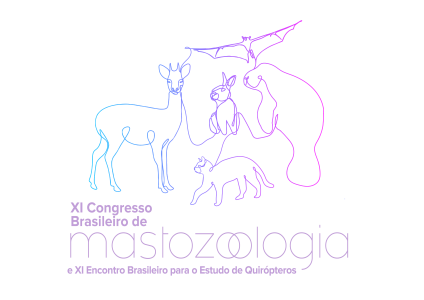Dados do Trabalho
Título:
GAPS IN KNOWLEDGE AND BONES: DESCRIPTIVE AND COMPARATIVE ANATOMY AND VARIATION IN THE ORBIT-ASSOCIATED FISSURES AND FORAMINA IN CALLICEBUS NIGRIFRONS (PRIMATES: PITHECIIDAE)
Resumo:
Detailed anatomical descriptions and comparisons are important for an adequate understanding of functional and evolutionary aspects of animal biology. Given the high diversity of nerves and blood vessels that crosses the fissures and foramina of the mammalian cranium, these apertures have significant functional relevance, and can thus become one of the targets of evolutionary forces. Because of that, these apertures may have informative potential for studies on taxonomy, evolution, and physiology. This work aims to describe the orbit-related fissures and foramina of Callicebus nigrifrons and evaluate intra- and interspecific variation among this species and other primates and mammals as a whole. To that goal, we observed the crania of 18 individuals of C. nigrifrons and 2 individuals each of 5 species of platyrrhines from the mammal collection at the Centro de Coleções Taxonômicas – Universidade Federal de Minas Gerais (CCT-UFMG). Data from the literature regarding human, Strepsirrhini and Tarsiiformes (Order Primates) and tree shrew (Mammalia: Scandentia) anatomy were also used to make comparisons. Most nomenclature is based on previous works on descriptive anatomy of mammals, especially of the strepsirrhines and the tree shrew, in order to facilitate comparisons between primates and other mammals. Some of the apertures, such as the lateral and inferior orbital fissures (LOFIS and IOFIS), have no clear counterpart in non-primate mammals, and their nomenclature was based on previous work on human and primate anatomy. The greatest intraspecific variation among C. nigrifrons was found in the infraorbital foramina (IOF), in the meningo-orbital foramen (MOF) and in a series of foramina on the orbit ceiling that communicate with a vacuity in the frontal bone. No name is assigned to this last foramen, given that their homology to foramina in other mammals is not yet clearly established. The most invariable apertures among C. nigrifrons were the zygomaticofacial foramen (ZFF) and the LOFIS, which also varies little among species of Platyrrhini, a surprising result given that there is not any known functional relevance for this fissure. The greatest distinction between the species seems to be around the orbit floor: the sphenopalatine foramen (SPF) opens on the bottom of the medial wall of the orbits in C. nigrifrons and also in C. dubius, Callithrix and Aotus, and deep within the sphenopalatine fossa – and thus outside the orbits – in Alouatta, Sapajus and Homo. This variation seems to be related to allometry and position of the orbit relative to the palate, but more detailed investigations are required to test this hypothesis. IOFIS shape and size also vary greatly intra- and interspecifically. The assignment of names to these apertures relies on homology hypotheses, but given the lack of detailed anatomical descriptions of both the bones and soft tissue parts of the primate head, it may be still be premature to establish these relationships.
Keywords: Callicebinae; homology; anatomical nomenclature; mammal collection
Financiamento:
CNPq
Área
Anatomia e Morfologia
Autores
Vítor Emídio de Mendonça, Fernando Araújo Perini
